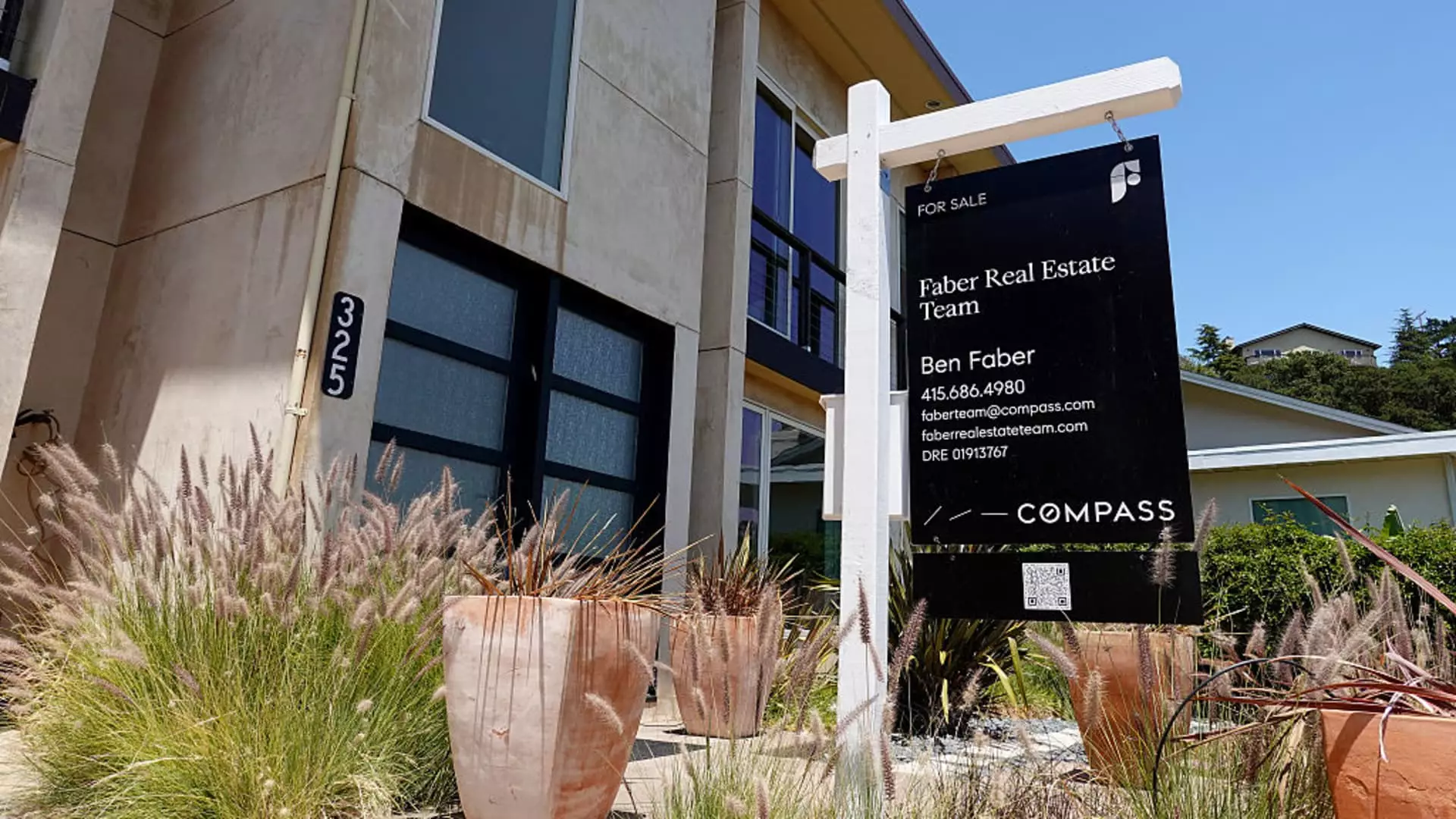The once-booming housing market is now facing a stark and sobering reality. After years of breathtaking price surges fueled by historical lows in interest rates, the current landscape suggests a much more temperate cooling. According to data from the S&P CoreLogic Case-Shiller Index, home prices experienced a mere 2.7% uptick in April year-over-year, a date with reality that should send shivers down the spine of homeowners and investors alike. This statistic, while marginally positive, marks the smallest annual increase in nearly two years, mirroring a profound shift in the principles driving this essential market.
It is significant to note that this deceleration is not just a minor hiccup but a reflection of larger underlying trends. The profound slowing of demand appears to have finally caught up with inflated supply levels, which had provided a false sense of security for property owners. The reality is sobering: the exuberant rise of prices that characterized 2020 and 2021 is being replaced with a cautious rhythm of moderation as buyers reassess their capacity in the face of soaring mortgage rates and shifting economic fundamentals.
A Regional Reckoning
The fallout of this trend is being felt unevenly across the country. Once-coveted hotspots in the Sun Belt region are now experiencing declines, while traditionally stable markets in the Midwest and Northeast are taking the lead in relative price increases. Cities like New York are witnessing impressive growth, with a 7.9% rise, while hotbeds influenced by pandemic relocations — such as Tampa and Dallas — have seen price reductions of 2.2% and a slight fall of 0.2%, respectively. This geographical redistribution of market strength is telling; it reflects an increasingly discerning buyer base that is ready to pivot toward stability rather than chase fleeting trends.
Nicholas Godec of S&P Dow Jones Indices aptly encapsulated this phenomenon, describing a “maturing market that’s increasingly driven by fundamentals rather than speculative fervor.” This evolution denotes a critical shift where perceived desirability no longer guarantees a hot market, signaling that buyers are now seeking genuine value and sustainability, not just momentary whims of the real estate allure.
The Mortgage Monster
One of the most significant culprits behind this market shake-up is the uptick in mortgage rates, which soared above 7% in April. For many would-be buyers, this translates to an avalanche of stress, with monthly payments at generational highs effectively pricing out first-time buyers. The National Association of Realtors reported a worrying drop in first-time buyers, whose share of the market hit an alarming low of 30%, a striking contrast to their historical norm of around 40%. This is not just statistical nuance; it is an indicator of a system that is losing its accessibility for countless hopeful homeowners.
Borrowing costs have triggered a cascading effect, restricting entry points for new buyers while simultaneously locking existing homeowners into lower-rate mortgages that they are unwilling to relinquish. This creates a peculiar circumstance in which supply remains constricted, with homeowners seemingly stuck in what has been labeled the “golden handcuffs” of pre-pandemic interest rates.
The Illusion of Correction
Given the current market dynamics, one must grapple with the question of potential corrections. While prices are undoubtedly softening, the specter of an abrupt decline akin to the aftermath of the subprime mortgage crisis seems unlikely. Housing supply remains tight and, although the number of homes for sale is rising, it remains below pre-pandemic levels. Historical data indicates that a mere 6% of sellers face potential losses, which is a stark contrast to previous crises that decimated homeowner equity.
While the narrative of a collapsing housing market seems appealing for certain investors and analysts, the structural issues at play — namely, a constrained supply coupled with high demand for core urban areas — combined with buyer hesitance due to escalating rates, create a complex picture for any would-be doomsayers. The balancing act between supply and demand continues to act as a stabilizing force, ensuring that while prices may retreat from their peaks, a catastrophic crash seems a distant prospect. This unfolding story requires not merely observation but an astute appreciation of the evolving notions of value in America’s neighborhoods.


Leave a Reply